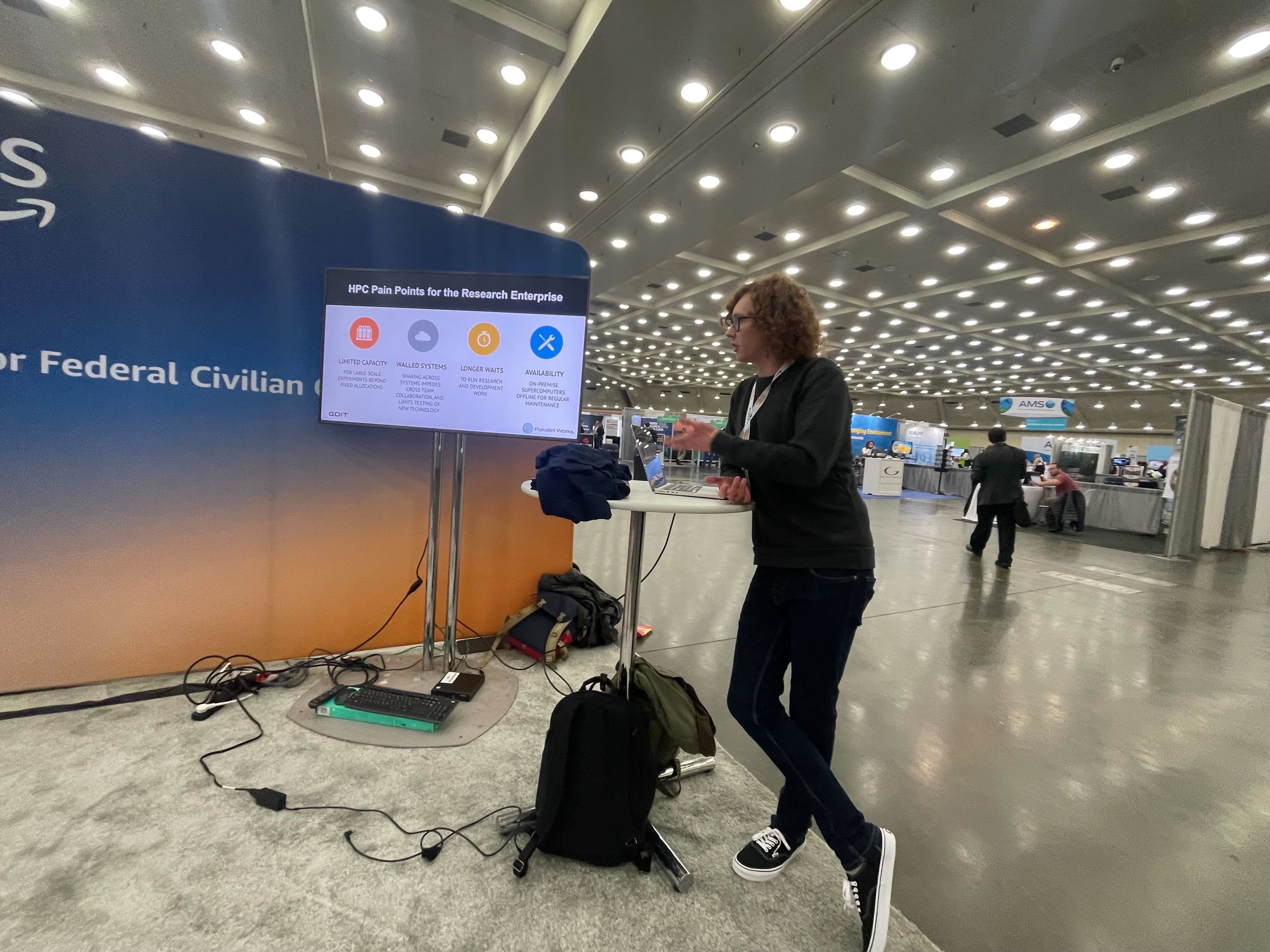January 2024 News & Changes
We were excited to present at the 104th Annual Meeting of the American Meteorological Society (AMS). Continue reading for an overview of what changed at PW over the last month.
 Matt Long presenting at the AMS Annual Meeting
Matt Long presenting at the AMS Annual Meeting
January
News
The American Meteorological Society (AMS) held it’s 104th Annual Meeting from January 28th to February 1st. We were thrilled to send Senior Computational Scientist Dr. Luke Peffers and Matt Long, Site Reliability and Support Engineer to the meeting. Together they presented our platform’s abilities to attendees, focusing on how climate scientists use PW for their research. Thank you to AWS for sharing their booth with us!
Recent Changes
In addition to Azure Active Directory, we’ve added a new authentication option for logging in to the platform: the Lightweight Directory Access Protocol (LDAP). Administrators can add this feature by following this page of our user guide.
We've also made the following changes for on-premises users:
- New workflows:
- Template session
- Template job submitter
- Launch a program on login or compute nodes: terminal sessions, remote desktop session, graphical programs, and Jupyter Notebooks*
- Reliable mounting of remote filesystems to user workspaces, which is currently supported through SSHFS
- Editing of mounted on-premises files through the web interface
- Additional customization options for workflow code, especially for graphical programs and training programs
- Additional customization for VNC settings of graphical displays per running session
- Additional testing for supported on-premises systems
*Jupyter Notebooks can be launched either on containers or your root filesystem.
Upcoming Changes
Our engineering team is currently working on a new storage system. Users will be able to add persistent and ephemeral disk options across AWS, Azure, and Google Cloud.
We're also in the beginning stages of creating a command-line interface (CLI) and look forward to sharing more information in a future post.
